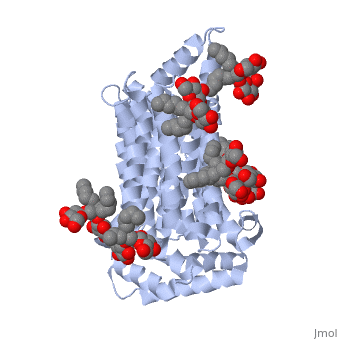Function
The main function of this protein is glucose transmembrane transport. It is one of fourteen facilitative sugar transporters. [1]
GLUT3 is categorized as a Class I transporter due to its protein sequence and structural similarity to other glucose transporters grouped in Class I. GLUT3 displays the highest affinity for glucose of all of the Class I glucose transporters and has a transport capacity five times greater than that of GLUT1 and GLUT4[2].
GLUT3 is found predominantly in brain tissue, almost always expressed by neurons. The location of GLUT3 has led to it sometimes being called the "neuronal glucose transporter".
Its main function is to act in the transmembrane region to create channels for glucose to move across the cell membrane. First, the empty carrier opens to the cis side of the membrane for glucose to bind[3]. Then the substrate binding carrier translocates to the trans side of the membrane where it then releases glucose on that side. Last the empty carrier switches to the cis side.
Disease
Defects in GLUT3 can cause fetal death as well as neurodegeneration, which can lead to diseases like Alzheimer’s.
In Type 2 Diabetes patients, there is a decrease in the amount of transcripts that encode for GLUT3.
Structural highlights
GLUT3 has 481 amino acids, which compose 28 alpha helices. It weighs approximately 52,520 Daltons which is equivalent to 8.72115e-20 grams[4].
Its are Leucine, Alanine, Phenylalanine, Isoleucine.
Its are Serine, Glutamic Acid, Arginine, Threonine.

